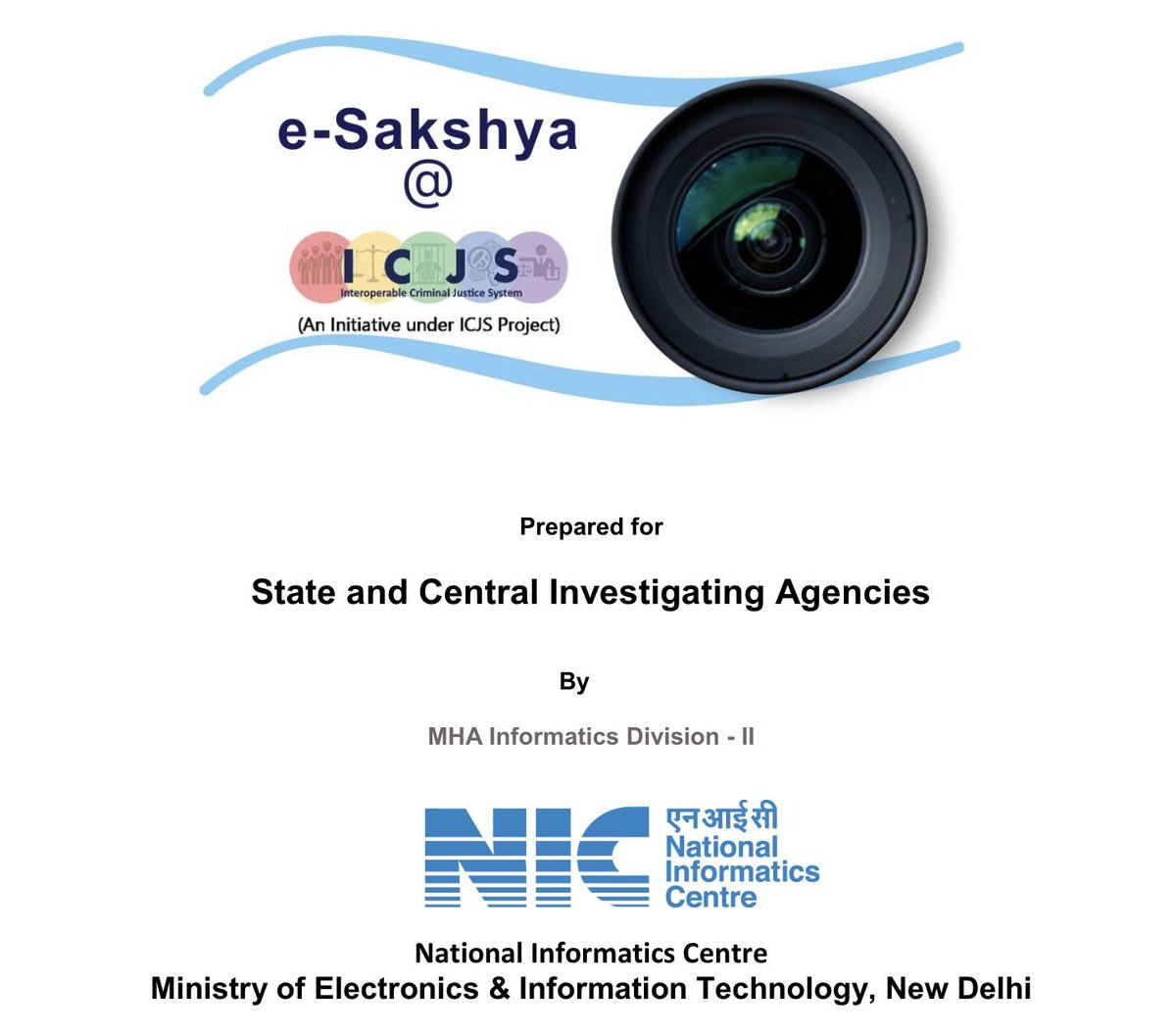Table of contents
The eSakshya app is a mobile application developed by the National Informatics Centre (NIC) to assist police in recording and managing evidence in criminal cases.
This app is part of the broader digital transformation in India's criminal justice system, coinciding with the implementation of new criminal laws.

Here are the key details and implications of the eSakshya app:
Key Features
- Recording Scene of Crime:
- The app allows police officers to record the scene of a crime, search, and seizure activities using their mobile phones.
- Each recording can be a maximum of four minutes long, and multiple recordings can be uploaded for each First Information Report (FIR).
- Uploading Evidence:
- After recording, the police officer must upload the file to a cloud-based platform.
- The officer is required to upload a selfie after completing the procedure to ensure authenticity.
- Options for Uploading:
- If there are connectivity issues, officers can record the crime scene on their personal devices, generate a hash value, and upload the file later from the police station.
- Alternatively, if good internet speed is available, they can directly upload the recordings through the eSakshya app.
- Uniformity and Conviction Rate:
- The app aims to bring uniformity in investigations across different states, which is expected to increase the conviction rate.
- The Bharatiya Nagarik Suraksha Sanhita (BNSS) mandates compulsory audiovisual recording of search and seizure in each criminal case and mandatory forensic examination in cases where the offence attracts a punishment of seven years or more.

Implications
- Digital Transformation:
- The eSakshya app represents a significant step towards digitizing the criminal justice process in India.
- It aligns with the new criminal laws set to replace the Indian Penal Code, Indian Evidence Act, and Code of Criminal Procedure from July 1.
- Resource Optimization:
- Procuring hardware and cloud space for storing digital evidence is an expensive affair, and the app helps optimize these resources.
- It ensures that even states with limited resources can comply with the new legal requirements.
- Chain of Evidence:
- Maintaining the sanctity of the chain of evidence submission is crucial. Any procedural lapse in handling digital evidence could benefit the accused.
- The app aims to minimize procedural infirmities that often lead to accused individuals escaping conviction.
- Forensic Examination:
- The BNSS mandates forensic examination in serious offences, and the app facilitates the recording and submission of forensic evidence.
- This could lead to more robust and reliable evidence being presented in court, thereby strengthening the prosecution's case.
- Challenges:
- Ensuring good internet connectivity in all areas remains a challenge.
- Training police personnel to effectively use the app and handle digital evidence is essential for its successful implementation.
Conclusion
The eSakshya app is a crucial tool in modernizing India's criminal justice system by digitizing the process of recording and managing evidence. It aims to bring uniformity in investigations, optimize resources, and increase the conviction rate by ensuring procedural integrity. However, its success will depend on addressing challenges related to connectivity, training, and maintaining the chain of evidence.

